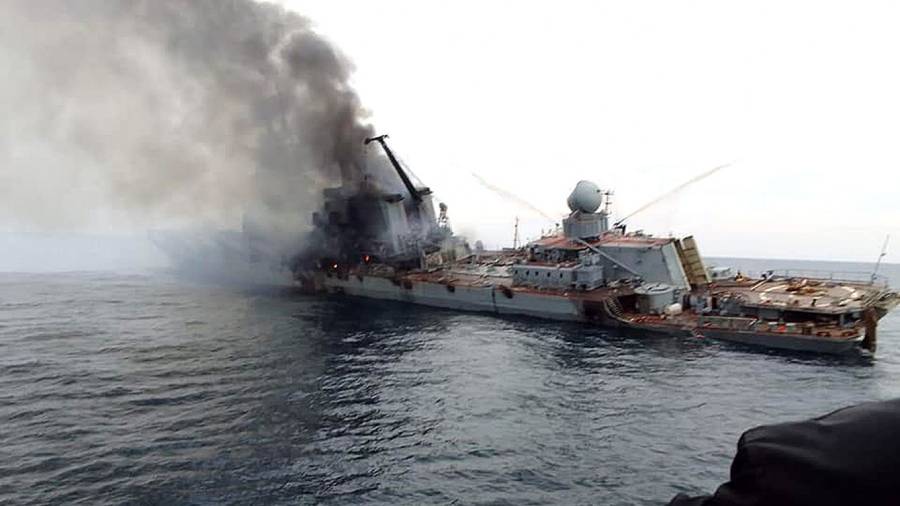
Just as the cause of the Kursk submarine disaster remains shrouded in mystery — the nuclear-powered Russian submarine suffered an explosion during a naval exercise on Aug. 12, 2000, and sank, killing all 118 crew onboard — it is unlikely that we will ever get to the bottom of the sequence of events last month that led to the sinking of the Moskva guided missile cruiser, the flagship of the Russian navy’s Black Sea fleet. Ukraine claims it struck the vessel with two missiles, while Russia says ammunition onboard the ship exploded and the ship tipped over while being towed back to port.
However, if one removes the multilayered defensive capabilities of the Moskva from the equation — its air defense, anti-missile and electronic warfare systems — and examines the battlespace using a tactical mindset, it is possible to gain a clearer understanding of what might have occurred, and also predict the future direction of naval warfare.
Ever since Moscow initiated its “special military operation” against Ukraine, the Moskva had been patrolling the Black Sea, on standby to provide an air defense umbrella to the amphibious taskforce waiting offshore from the port city of Odessa. In the final moments before the first missile struck, the Moskva was sailing on a course 24 nautical miles (44km) from Snake Island and 80 nautical miles from Odessa, in international waters.
A Turkish-made Baykar Bayraktar TB2 uncrewed aerial vehicle (UAV), operated by the Ukrainian military, was hovering at a high altitude to identify and then gain a fix on the Moskva. Meanwhile, a US Navy Boeing P-8 Poseidon surveillance aircraft, operating along the Romanian coast, was carrying out surveillance and reconaissance. Both of these assets presented a serious threat to the Moskva as they could provide the Ukrainian military’s shore-based Neptune anti-ship missile battery with precise location and targeting information.

